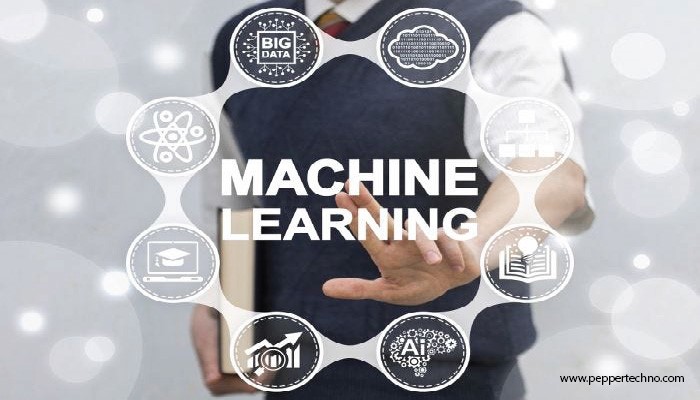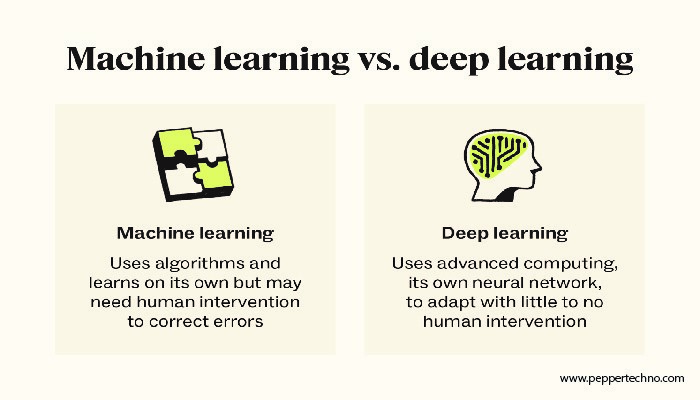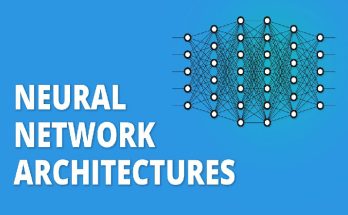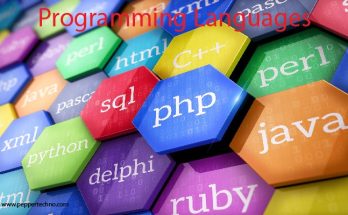Elevating Intelligence: A Comprehensive Journey into Machine Learning and Deep Learning Paradigms
Step into the realm of cutting-edge technology where machines learn and intelligence evolves – welcome to the fascinating world of Machine Learning and Deep Learning. From powering virtual assistants to revolutionizing healthcare, these paradigms are shaping the future of artificial intelligence. Let’s embark on a comprehensive journey to unravel the intricacies, applications, challenges, and emerging trends in machine learning and deep learning. Buckle up for an enlightening exploration ahead!

Understanding the Basics: What are Machine Learning and Deep Learning?
Machine Learning is a branch of artificial intelligence that focuses on creating algorithms and models capable of learning from data to make predictions or decisions without being explicitly programmed. It involves training machines to recognize patterns, adapt to new information, and improve over time.
Deep Learning is a subset of Machine Learning that uses neural networks with multiple layers to extract high-level features from raw data. These deep neural networks mimic the human brain’s structure, enabling them to process vast amounts of complex information and perform tasks like image recognition and natural language processing.
In essence, Machine Learning teaches computers how to learn from data, while Deep Learning delves deeper into complex problems by hierarchically extracting intricate patterns. Understanding these fundamental concepts lays the groundwork for exploring their diverse applications across various industries.
Key Differences between Machine Learning and Deep Learning
Machine learning and deep learning are both subsets of artificial intelligence, yet they have distinct differences in their approaches and capabilities.
Machine learning focuses on algorithms that can learn from and make predictions or decisions based on data. It typically requires human intervention to select features and provide labeled data for training.
On the other hand, deep learning utilizes neural networks with multiple layers to automatically extract features from raw data. This allows deep learning models to learn complex patterns without explicit programming.
While machine learning is suitable for a wide range of tasks, deep learning excels in handling unstructured data like images, audio, and text due to its ability to capture intricate relationships within the data.
Understanding these key differences is crucial for determining which approach best suits a specific problem or application in the realm of artificial intelligence.
The Evolution of Machine Learning and Deep Learning
The evolution of machine learning and deep learning has been a remarkable journey marked by significant advancements over the years. Beginning with traditional machine learning algorithms that relied heavily on manual feature extraction, we witnessed a shift towards more sophisticated techniques like neural networks and deep learning models.
As technology progressed, the availability of vast amounts of data combined with increased computing power paved the way for complex neural networks to excel in tasks such as image recognition, natural language processing, and speech synthesis. This led to breakthroughs in various fields including healthcare, finance, and autonomous driving.
Deep learning architectures like Convolutional Neural Networks (CNNs) and Recurrent Neural Networks (RNNs) revolutionized pattern recognition and sequence prediction tasks. The introduction of frameworks such as Tensor Flow and PyTorch further accelerated the development and deployment of deep learning models across industries.
The evolution of machine learning and deep learning continues to shape our technological landscape, opening up new possibilities for innovation and discovery in artificial intelligence.
Applications of Machine Learning and Deep Learning in Various Industries
Machine learning and deep learning technologies are revolutionizing various industries by enhancing efficiency, decision-making processes, and customer experiences. In healthcare, these AI methods analyze vast amounts of data to assist in diagnosing diseases, predicting patient outcomes, and personalizing treatment plans.
The financial sector benefits from machine learning algorithms for fraud detection, risk assessment, and algorithmic trading strategies. Retailers utilize recommendation systems powered by deep learning to offer personalized product suggestions based on customers’ preferences and behaviors.
In the transportation industry, autonomous vehicles rely on machine learning models to navigate roads safely while optimizing routes. Manufacturers optimize production processes through predictive maintenance using machine learning algorithms to reduce downtime and operational costs.
Even in entertainment and gaming industries, AI-driven content recommendations enhance user engagement. Machine learning is reshaping marketing strategies by analyzing consumer behavior patterns for targeted advertising campaigns. The possibilities of applying these technologies across diverse sectors continue to expand as businesses harness the power of artificial intelligence for competitive advantage.
Challenges and Risks Associated with Implementing Machine Learning and Deep Learning
Implementing machine learning and deep learning technologies come with their set of challenges and risks. One of the main obstacles is data quality and quantity – without sufficient high-quality data, the algorithms may not perform effectively. Another challenge is the need for skilled professionals who understand these complex systems to develop and maintain them.
Additionally, there are ethical considerations surrounding AI technologies, such as bias in algorithmic decision-making. Ensuring fairness and transparency in these models remains a significant concern for organizations utilizing ML and DL.
Cyber security threats also pose a risk when implementing these technologies, as they can be vulnerable to attacks if not properly secured. Moreover, scalability issues may arise when trying to deploy ML/DL solutions across large datasets or complex systems.
Navigating through these challenges requires careful planning, expertise, and continual monitoring to mitigate potential risks associated with integrating machine learning and deep learning into business operations.
Emerging Trends in Machine Learning and Deep Learning
As technology continues to advance at a rapid pace, the field of machine learning and deep learning is also evolving with new trends shaping its landscape. One emerging trend is the rise of explainable AI, where models are designed to provide transparent insights into their decision-making processes. This shift addresses concerns about black-box algorithms by enhancing interpretability.
Another notable trend is the integration of machine learning with edge computing, enabling data processing closer to the source rather than relying solely on cloud-based systems. This development enhances efficiency and reduces latency in real-time applications. Additionally, federated learning has gained traction as a decentralized approach that allows multiple devices to collaboratively train models without sharing raw data.
Furthermore, there is an increasing focus on automated machine learning (Auto ML) tools that streamline model development processes for users with varying levels of expertise. These tools aim to democratize AI by making it more accessible and user-friendly across industries. These emerging trends signal exciting possibilities for the future of artificial intelligence and its applications in diverse sectors such as healthcare, finance, and transportation.
Conclusion: The Future of Artificial Intelligence
As we journey through the realms of machine learning and deep learning, it becomes evident that these technologies are revolutionizing the way we interact with data and information. The future of artificial intelligence holds immense potential for growth and innovation.
With constant advancements in algorithms, computing power, and data availability, machine learning and deep learning will continue to shape various industries such as healthcare, finance, marketing, and more. As businesses embrace AI-driven solutions to enhance decision-making processes and improve efficiencies, the demand for skilled professionals in this field will only increase.
The key lies in understanding how to harness the power of machine learning and deep learning effectively while addressing challenges related to bias, privacy concerns, interpretability issues, ethical considerations, among others. By overcoming these obstacles through collaboration between experts from diverse backgrounds and disciplines, we can truly unlock the full potential of artificial intelligence.
In essence, the future of AI is bright but not without its complexities. It requires a balanced approach that combines technical expertise with ethical considerations to ensure that innovation benefits society as a whole. As we navigate this ever-evolving landscape of intelligent machines, one thing remains certain – the possibilities are endless when human ingenuity meets artificial intelligence.



